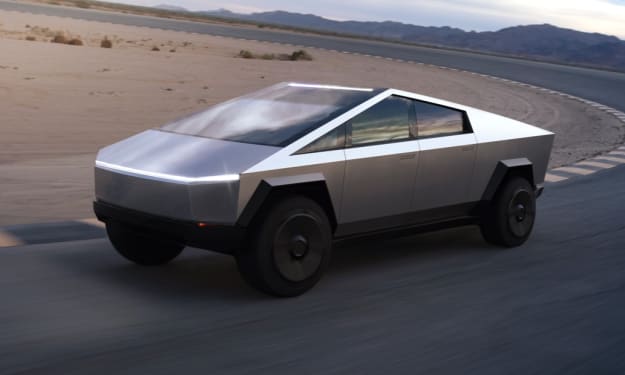
I. Introduction
The Tesla Model X is an all-electric SUV that has been gaining popularity since its launch in 2015. As with any product, price is a crucial factor in the purchasing decision for consumers. In this article, we will explore the different factors that affect the pricing of the Model X, including production costs, features and options, competition, market demand, and tax incentives. We will also compare Model X prices across different markets, analyze pricing strategies used by Tesla, and examine customer perceptions of the Model X price. By the end of this article, readers will have a better understanding of the various elements that influence the price of the Model X and how it is perceived by customers.
II. Factors Affecting the Model X Price
A. Production Costs
The cost of producing the Model X is a significant factor that affects its price. Tesla uses advanced technology and high-quality materials, such as aluminum and carbon fiber, to manufacture the car. The cost of these materials, as well as the cost of labor and manufacturing processes, can influence the final price of the vehicle.
B. Features and Options
The Model X has various features and options, such as autopilot, a premium audio system, and a panoramic sunroof, that can increase its price. Customers can customize their cars by choosing from a range of interior and exterior colors, wheels, and other features. These options can significantly impact the price of the Model X.
C. Competition
The Model X faces competition from other electric and gasoline-powered SUVs. The prices of these competing vehicles can influence the Model X's price, as Tesla may need to adjust its pricing to remain competitive in the market.
D. Market Demand
Market demand is another factor that can affect the Model X's price. If demand is high, Tesla may increase the price of the vehicle, as customers are willing to pay more to own a Model X. Conversely, if demand is low, Tesla may reduce the price to attract more customers.
E. Tax Incentives and Rebates
Governments offer tax incentives and rebates to encourage the adoption of electric vehicles. The availability and amount of these incentives can affect the Model X's price. In some cases, these incentives can significantly reduce the cost of owning a Model X.
By considering these factors, Tesla can determine the optimal price point for the Model X, balancing affordability for customers and profitability for the company.
III. Comparison of Model X Prices Across Markets
A. Differences in Prices Between Regions and Countries
The price of the Model X varies across different regions and countries. For example, the price of the Model X in the United States may differ from the price in Europe, Asia, or Australia. These price differences can be due to various factors such as taxes, import duties, and shipping costs.
B. Explanation of Pricing Disparities
The pricing disparities across markets can be explained by the differences in production costs, regulations, and market demand. For example, production costs may be lower in one country compared to another, resulting in a lower price for the Model X. Similarly, tax incentives and rebates may be more attractive in some regions, leading to a higher demand for the Model X and higher prices.
C. Factors Influencing the Variance
Factors that influence the price variance include currency fluctuations, import/export regulations, and government policies. Tesla also adjusts its pricing to remain competitive in each market.
Understanding the differences in Model X prices across markets can help customers make informed decisions about purchasing the vehicle. It can also provide insights into the factors that influence pricing and market demand in each region.
IV. Model X Pricing Strategies
A. Dynamic Pricing
Tesla uses dynamic pricing to adjust the price of the Model X based on market demand. For example, during high-demand periods, Tesla may increase the price of the Model X to maximize profits. Conversely, during low-demand periods, Tesla may lower the price to attract more customers.
B. Promotions and Discounts
Tesla also uses promotions and discounts to attract customers and increase sales. For example, Tesla may offer discounts to customers who trade in their old vehicles for a new Model X. Tesla also offers referral programs that reward customers who refer new customers to purchase a Model X.
C. Pricing Changes Over Time
Tesla frequently updates the Model X with new features and options, which can affect its pricing. As the technology advances, older models may become less expensive, while newer models may have higher prices. Tesla also adjusts its pricing as production costs change.
D. Factors Influencing Pricing Strategies
Tesla's pricing strategies are influenced by various factors, including production costs, market demand, and competition. Tesla also considers government incentives and regulations when setting the price of the Model X. Tesla's pricing strategies aim to balance the affordability of the Model X for customers with the profitability of the company. By understanding these pricing strategies, customers can make informed decisions about purchasing a Model X and anticipate potential price changes over time.
V. Customer Perception of Model X Price
A. Affordability
The Model X is a luxury vehicle, and its high price may be a barrier for some customers. However, many customers perceive the Model X as a worthwhile investment due to its advanced technology, performance, and environmental benefits. Tesla's pricing strategies, such as tax incentives and discounts, can also improve the affordability of the Model X for some customers.
B. Value for Money
Customers who purchase the Model X often perceive it as a valuable investment due to its long-term cost savings, performance, and features. The Model X has a lower cost of ownership than gasoline-powered SUVs, and customers can save money on fuel and maintenance costs. The advanced features and technology of the Model X also provide value for money for many customers.
C. Perception of Competing Models
Customers may compare the price of the Model X to other electric and gasoline-powered SUVs in the market. While the Model X is more expensive than some of its competitors, customers may perceive it as a better value for money due to its superior technology, performance, and environmental benefits.
D. Brand Perception
Tesla has a strong brand reputation for innovation, technology, and sustainability. Many customers perceive the Model X as a premium vehicle that aligns with Tesla's brand values. This perception can influence the customer's willingness to pay a higher price for the Model X.
Understanding the customer's perception of the Model X price is crucial for Tesla to maintain its competitive edge in the market. Tesla's pricing strategies aim to balance affordability and profitability while meeting customer expectations and preferences.
VI. Conclusion
The price of the Model X is influenced by various factors, including production costs, market demand, and competition. Tesla's pricing strategies, such as dynamic pricing, promotions and discounts, and pricing changes over time, aim to balance affordability and profitability while meeting customer expectations.
The customer's perception of the Model X price is crucial for Tesla to maintain its competitive edge in the market. While the high price of the Model X may be a barrier for some customers, many perceive it as a valuable investment due to its advanced technology, performance, and environmental benefits. Tesla's brand reputation also influences the customer's perception of the Model X price.
Understanding the factors that affect the Model X price and the customer's perception of its value can help customers make informed decisions about purchasing the vehicle. It can also provide insights into Tesla's pricing strategies and its competitive position in the market. Ultimately, Tesla's pricing strategies aim to balance affordability and profitability while delivering innovative and sustainable products to customers worldwide.
About the Creator
Samuel
I write about Science/Tech/Business & Anything that can give value to people ❤️
I'm on YouTube too guys feel free to check out my channel here: www.youtube.com/@sambladeco






Comments
There are no comments for this story
Be the first to respond and start the conversation.